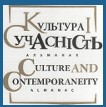ВИМІРИ ЛЮДСЬКОЇ ТВОРЧОСТІ В КОНТЕКСТІ ПОРІВНЯЛЬНОГО АНАЛІЗУ ПРАЦЬ М. ГАЙДЕГГЕРА ТА А. БЕРГСОНА
DIMENSIONS OF HUMAN CREATIVITY IN THE CONTEXT OF COMPARATIVE ANALYSIS OF THE WORKS OF M. HEIDEGGER AND H. BERGSON
Author(s): Valeriy Anatolyevich Sivers, Oksana BuhaiovaSubject(s): Aesthetics, Contemporary Philosophy, Existentialism, Ontology
Published by: Національна академія керівних кадрів культури і мистецтв
Keywords: M. Heidegger; H. Bergson; creativity; myth-making; Observer; Other; nothing; consciousness; self-awareness; category; existential; dissolution; suspension of time;
Summary/Abstract: The purpose of the article is to substantiate the methodology of creativity based on a comparative analysis of the works of M. Heidegger (“The Origin of the Work of Art”) and H. Bergson (“Creative Evolution”). The research methodology was based on the futurological or value-futurological method, which is the author's proposal of V. Sivers. To determine the natural and genetic affinity of the two works, the comparative aspect of the methodology was applied, which made it possible to identify both their common points of intersection and points of distinction. In this methodological context, there is an author's component of vision, where at the intersection of different views new knowledge desired by every researcher should be born, or rather its changing and uncertain contours, which we call approaches to understanding creativity. The scientific novelty of the article lies in the reference to H. Bergson’s work “Creative Evolution” in the context of a comparative analysis with M. Heidegger’s work “The Origin of the Work of Art”. This helped to record being in a state of self-awareness and assert that any human activity performed and comprehended in this status is evidence and an indication of the process of creation, but does not prove it. It only reveals a new participant who is related to the subject and in some way separated from it. Conclusions. It has been proven that we can connect a person with the process of creation and the instance of the Observer. Creation happens every moment for two reasons: it has already happened, and it cannot stop. After all, nothing can exist. In fact, it prompts creation, which in human performance looks like creativity. Its ontological basis is the presence of nothing in the “anti-space”. It creates pressure on space with the requirement of realisation. The fact of awareness of nothingness is its transposition into consciousness and the condition of the “truth of essence”, namely the basis of the search for the essence of consciousness and the basis of self-awareness. Its invariant is the Observer.
Journal: Культура і сучасність
- Issue Year: 2023
- Issue No: 1
- Page Range: 9-16
- Page Count: 8
- Language: Ukrainian

